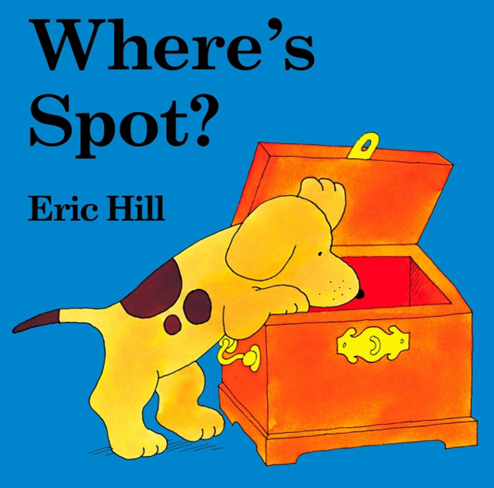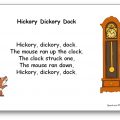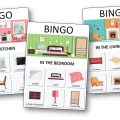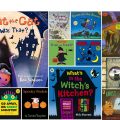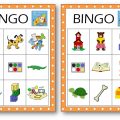Author: Eric Hill
Illustrator: Eric Hill
Publisher: Frederick Warne
Year: 1980
Language: English
Type of resource: Interactive lift-the-flap picture book
Themes: Animals, home, furniture, hide-and-seek
Age range: 3–8 years
School levels: Early Years / Key Stage 1 (Nursery to Year 3)
Main Teaching Objective: Understand and use furniture and animal vocabulary in simple sentences.
Main language objective: I can ask and answer “Where is…?” questions to find someone or something.
Summary of the Book
It’s dinner time and Sally the mother dog is looking for her puppy, Spot. She searches all around the house: behind the door, inside the clock, under the stairs… but in each place, instead of Spot, she finds a different surprise animal! After exploring all the hiding places, Sally finally discovers Spot hiding in the basket. At last, Spot joins his mum for dinner.
Culture and Vocabulary
This classic of British children’s literature was first published in 1980 and launched the much-loved Spot series, famous for its simple repetitive structure and interactive lift-the-flap format. The story also reflects the typical layout of a British home, including features that may be less familiar to French-speaking pupils, such as the trapdoor under the stairs or the grandfather clock.
Furniture and household items: door, clock, piano, stairs, wardrobe, bed, box, rug, basket
Animals: bear, snake, hippo, bird, lion, monkey, crocodile, penguins, turtle, dog
Action verbs: is, eat, try, open, run, find
Objects: dinner, honey, bananas, rug, box, basket
Location expressions: behind the door, inside the clock, in the piano, under the stairs, under the bed, in the box, under the rug
Meal vocabulary: dinner, eat up
Question structures: Is he…? Where is…?
Idiomatic expressions: Good boy! Eat up your dinner!
Grammar and Structures
- Interrogative form with “Is he…?” – “Is he behind the door?” – A repeated structure for asking simple third-person yes/no questions, ideal for practising closed questions about location.
- Short negative answers – “No.” – Supports quick comprehension and short spoken responses.
- Prepositions of place – “behind”, “inside”, “under” – Reinforces spatial awareness and descriptive language.
- Present simple – “It’s dinner time.” – Links to routines and daily moments.
- Contracted form – “It’s dinner time.” – Provides a natural introduction to common spoken contractions.
- Imperative prompt – “Try the basket.” – Encourages prediction and interaction, easily reused in classroom games.
- Simple present affirmative – “It’s a bear eating honey.” – Models short affirmative statements in the present simple.
Phonology
- Rhythmic repetition of questions – “Is he behind…?” / “Is he in…? No.” – Reinforces fluency and memorisation through a question–answer game.
- Vowel contrast /ɪ/ vs /iː/ – “is” vs “eat” – Supports listening discrimination.
- Rising intonation in yes/no questions – “Is he behind the door?” – Encourages correct question prosody.
- Initial sound focus – bear, bed, basket, box – Helps develop awareness of /b/ and /k/ sounds.
- Similar sound discrimination – clock / crocodile, bed / bear / bird – Strengthens listening skills.
Teaching Suggestions
Before Reading
- Show the cover and ask: “Who is Spot? Where is he?”
- Teach key furniture and animal vocabulary using flashcards or a picture dictionary.
During Reading
- Have pupils repeat the questions “Is he…?” and the answer “No” together in chorus.
- Ask them to guess where Spot is before lifting each flap.
- Mime the animals found to connect comprehension with physical expression.
After Reading
- Play a “Where is Spot?” game by hiding a toy or object in the classroom and asking yes/no location questions.
- Sequence the hiding places in the correct story order.
- Sort the animals by habitat or diet.
Grammar mini-lesson:
- Interrogative form with “Is he…?” and prepositions of place.
- Short affirmative and negative answers (Yes / No).
Differentiation
For beginners: Limit the vocabulary to a few rooms in the house and two or three prepositions. Focus on visual support and repeated oral practice.
For more advanced pupils: Encourage them to reformulate full sentences, take the role of Spot’s mother, or design a new hiding-place route.
For EAL learners: Use gestures and visual aids to ensure comprehension of the story.
Cross-Curricular Connections
Science: Explore the natural habitats of the animals featured in the book.
PSHE / Citizenship: Discuss respect and care for pets.
Art: Create a lift-the-flap house with hidden animals inside.
PE / Drama: Mime Spot’s movements and those of the animals he meets.
Music: Sing simple songs such as The Animal Song to revise animal names and sounds, or Where is Thumbkin? to reinforce the “Where is…?” structure.
Project Ideas
Class book project – “Where is…?”
Objective: Each pupil designs one page with a hidden animal and a question in English. Assemble the pages into a collective class book. This project can be spread over several lessons.
Discover other picture books:
- Dear Zoo by Rod Campbell – expands animal vocabulary.
- Brown Bear, Brown Bear, What Do You See? by Bill Martin Jr – reinforces repetitive patterns and animal names.
- Spot Goes to School by Eric Hill – same author, familiar style.
- A Dark Dark Tale by Ruth Brown – introduces more prepositions of place.
Discover a lesson plan based on the book Where’s Spot? + English-speaking countries on La classe de Mallory.
Conclusion
Where’s Spot? is an ideal resource for introducing English in Early Years and lower primary (Key Stage 1). Its repetitive structure, simple vocabulary, and playful lift-the-flap format make it highly engaging for young learners. The book supports listening comprehension, the production of simple questions, and interactive class activities. It also lends itself to a variety of adaptable activities suitable for different proficiency levels. This classic picture book is a strong starting point for thematic units on animals, household furniture, interrogative structures, and prepositions of place in English.

